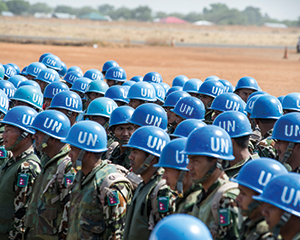If states decide to intervene militarily in another country, this raises normative, international law and power-political issues. In addition, states willing to intervene face the practical question of institutional design, namely whether the intervention should be unilateral, bilateral or multilateral. Unilateral interventions are rare, and bilateral interventions are almost non-existent. In fact, the institutional forms of multilateral cooperation are more diversified than the dichotomy of alliance versus coalition often mentioned in the literature would suggest.
What interests guide the choice of design? How does which design influence the intervention? Scholarly research on this has been marginal. To fill this gap, Matthias Dembinski undertakes a classificatory mapping in the new PRIF Report 5/2023 (in German), based on the dataset of all humanitarian military interventions since 1945 created at PRIF. Building on this analysis, the report formulates consequences for German and European policy.
Matthias Dembinski is a Senior Researcher and project leader at PRIF. He conducts research on issues of European security, processes of dissociation in international politics, and military interventions.
